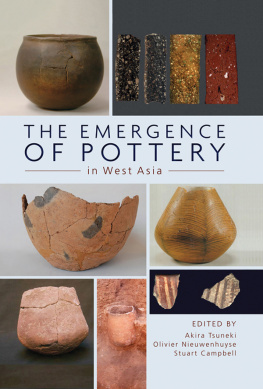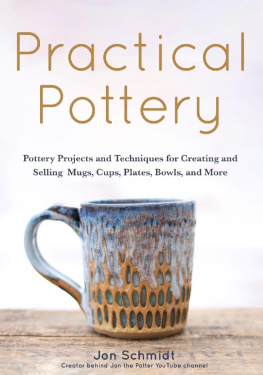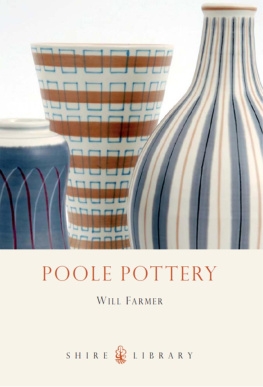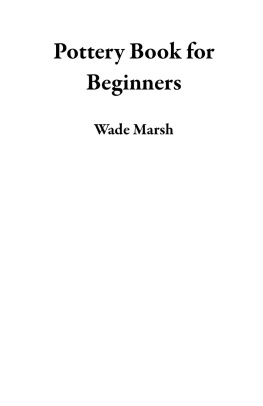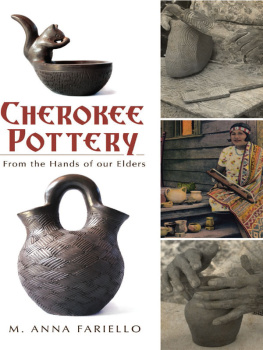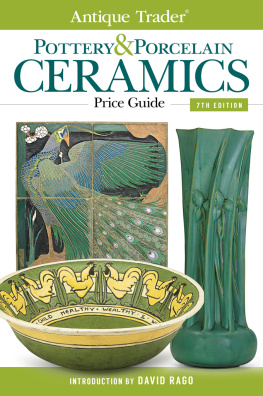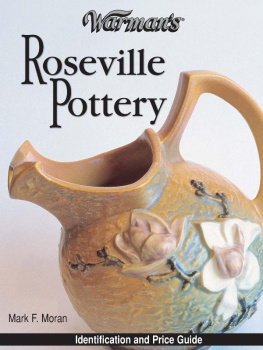
The Emergence of Pottery in West Asia
The Emergence of Pottery in West Asia
edited by
Akira Tsuneki
Olivier Nieuwenhuyse
Stuart Campbell
Published in the United Kingdom in 2017 by
OXBOW BOOKS
The Old Music Hall, 106108 Cowley Road, Oxford OX4 1JE
and in the United States by
OXBOW BOOKS
1950 Lawrence Road, Havertown, PA 19083
Oxbow Books and the individual authors 2017
Hardcover Edition: ISBN 978-1-78570-526-7
Digital Edition: ISBN 978-1-78570-527-4
Mobi Edition: ISBN 9781-78570-528-1
A CIP record for this book is available from the British Library
Library of Congress Control Number: 2017932406
All rights reserved. No part of this book may be reproduced or transmitted in any form or by any means, electronic or mechanical including photocopying, recording or by any information storage and retrieval system, without permission from the publisher in writing.
For a complete list of Oxbow titles, please contact:
UNITED KINGDOM
Oxbow Books
Telephone (01865) 241249, Fax (01865) 794449
Email:
www.oxbowbooks.com
UNITED STATES OF AMERICA
Oxbow Books
Telephone (800) 791-9354, Fax (610) 853-9146
Email:
www.casemateacademic.com/oxbow
Oxbow Books is part of the Casemate Group
Front cover images:
Top row : (Left) Kerkh Ware, Tell el-Kerkh 2; (Right) Pottery sections showing inclusions in early Mesopotamian ceramics (from left Akaray Tepe, Akaray Tepe, Tell Seker al-Aheimar, Tappeh Sang-e Chakhmaq).
Middle row : (Left) light coloured pottery with black mottles, Salat Camii Yan; (Right) red-on-buff painted pottery, Tappeh Sang-e Chakhmaq.
Bottom row : Examples of complete pottery vessels from the Proto-Hassuna phase from Tell Seker al-Aheimar (Left) unpainted pot, (Middle) large storage vessel in situ. (Right) decorated ceramics from the Initial Pottery Neolithic levels, Tell Sabi Abyad.
Preface
This book is a monograph which follows the international symposium on The emergence of pottery in West Asia: the search for the origin of pyrotechnology, which was held at the University of Tsukuba, Japan, on 29 and 30 October, 2009. This symposium was the first serious meeting to discuss the Neolithic pottery of this region by pottery experts. A corresponding symposium was held for the Japanese public by the same participants at the Ancient Orient Museum in Tokyo on November 1, 2009.
Since the late 1990s, the typology and stratigraphy of the earliest pottery had increasingly been reported from Neolithic sites in West Asia. Most of the pottery was discovered in cultural layers just above the pre-pottery layers, and looked to be from the oldest ceramic industry in West Asia. Therefore, based on the increasing quantity of new evidence, it seemed a good time to hold a discussion about the emergence of pottery in West Asia and to produce a new synthesis.
It was decided to contact colleagues who had been engaged in the excavation and study of pottery at these sites. As several sites were under excavation by Japanese colleagues, Tsukuba was an obvious location for a symposium. One of the editors of this volume (A.T.) applied for an international meeting grant from the Japan Society for the Promotion of Science, and this application was accepted. As the symposium would be held in Japan, which has produced some of the earliest pottery in the world, we thought a comparative study of the emergence of pottery in the two regions (West Asia and Japan) would contribute to further understanding of why pottery appeared and developed differently in West Asia. This was the reason why we invited Prof. Yasuhiro Taniguchi, one of the leading scholars of the Jomon culture and pottery of Japan.
We were grateful for the efforts of all the scholars and students who attended the symposium and who gave presentations and offered suggestions on the earliest pottery. The grant from the Japan Society for Promotion of Science which facilitated this symposium was greatly appreciated. Bronwen Campbell was of great help in copy editing the contributions and Hannah Plug provided valuable proof reading assistance.
As we discuss in the main text, there are many reasons why we must investigate the emergence of pottery in West Asia. The region has a long history of ceramic production and appears to be one of the places in which the origins of pottery can be identified. We can also look to ceramic production as the root of many other critical technologies that also emerged in the region, such as metallurgy and glass-working. In the development of pyrotechnology, the invention of pottery in West Asia was an epoch-making event in human history. It signifies the beginning of genuine pyrotechnology.
At the symposium, each participant introduced the earliest pottery from their respective sites. Some scholars showed not only slides of the earliest pottery but also displayed artefacts themselves. We exchanged information on attributes of this earliest pottery, such as form, size, color, firing, paste, temper, decoration and surface treatment. We believe that sharing these attributes openly contributes to further understanding of the emergence and usage of the first pottery in West Asia.
The following themes were discussed: 1) date of appearance, 2) attributes, 3) function and 4) social innovation. To a certain extent, a consensus was reached for the emergence of pottery in West Asia, as you will see in the main text, although many new questions were also raised.
There were plans to publish the results immediately after the symposium. However, due to the negligence of the editors, several years have passed. We must sincerely apologize to the participants who have waited a long time since contributing their papers. If some papers lack the very latest knowledge and bibliography, it is the editors fault. However, recent tragic conflicts in Syria and Iraq have prevented new archaeological investigations and the earliest pottery mentioned in this book remains still the earliest in almost all cases. Therefore, we believe that this book contributes to the study of early pottery in West Asia.
Finally, we must mention the reason for the use of the term West Asia instead of the Near East in the symposium and in this book, to describe the regions where we have been engaged in research. This is partly because of the location of the symposium and partly because of the academic stance of one of the editors (A.T.). There is a hint of Eurocentrism in the term the Near East, and West Asia is not the Near East but the Near West (or maybe even the Far East) from the perspective of Japan, the locale of this symposium. Therefore, in this book and in the symposium, we use the geographical term, West Asia.
Akira Tsuneki
Olivier Nieuwenhuyse
Stuart Campbell
Chapter 1
The Significance of Research on the Emergence of Pottery in West Asia
Akira Tsuneki
Introduction
The invention of pottery signifies the beginning of genuine pyrotechnology, the most important technological innovation in human history and one that formed the basis of modern industrial technology (e.g. Childe 1951: 76). Without understanding the origins of pottery, we cannot have a clear picture of other technological innovations, such as the metallurgy of copper, bronze, iron and nonferrous metal, or glass working and fine ceramic production. It is clear that these technological innovations went hand in hand with social advancement. Therefore, to provide a complete sketch of human history, we need to consider potterys emergence as an initial technological advance.
Next page
